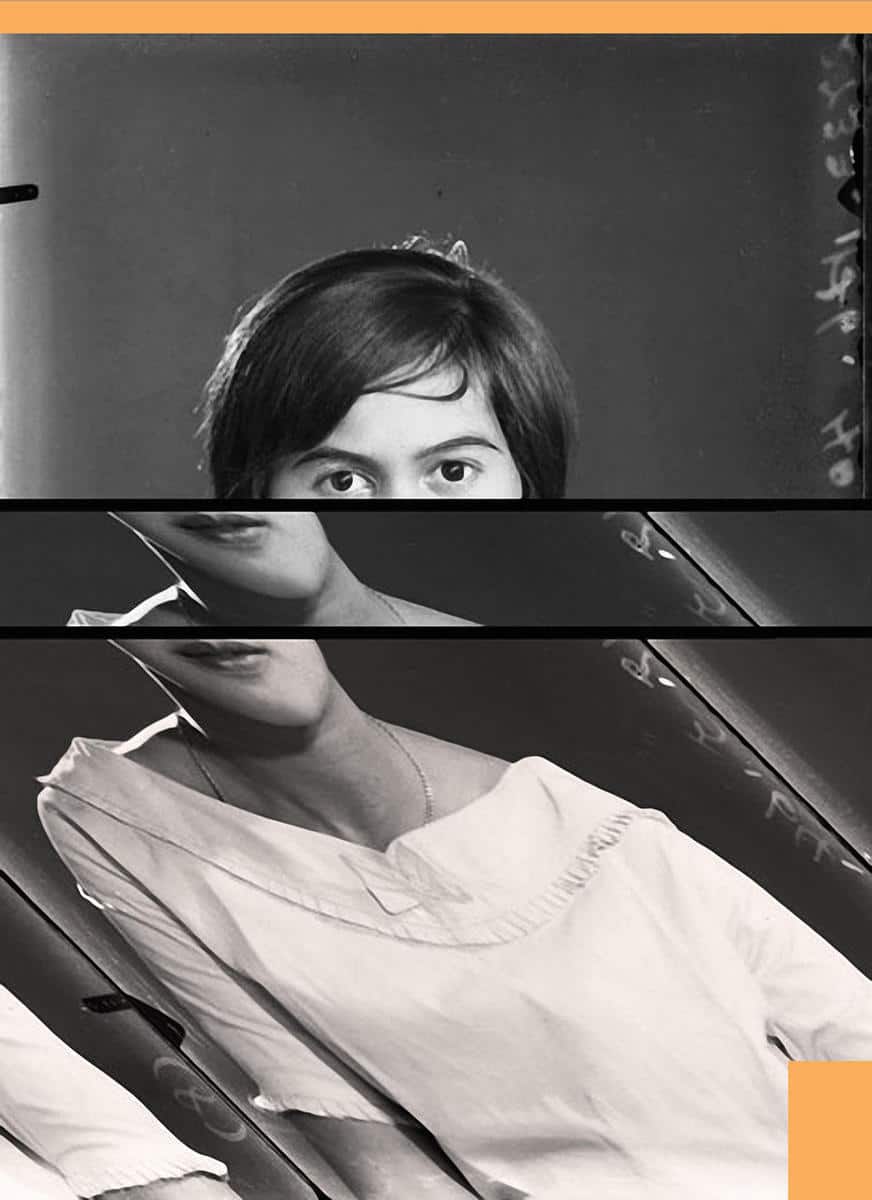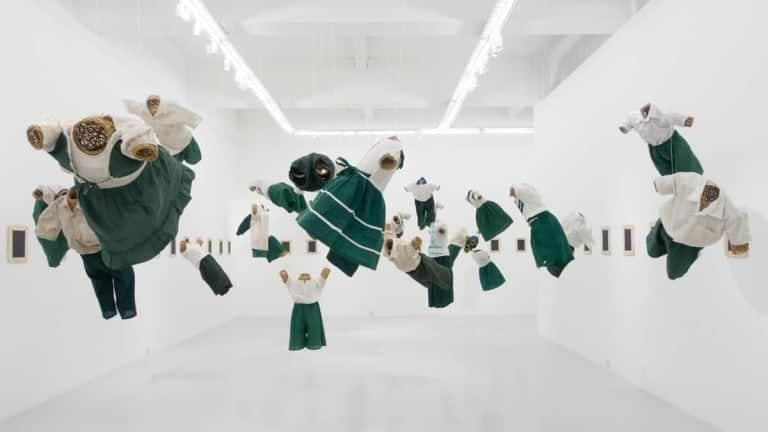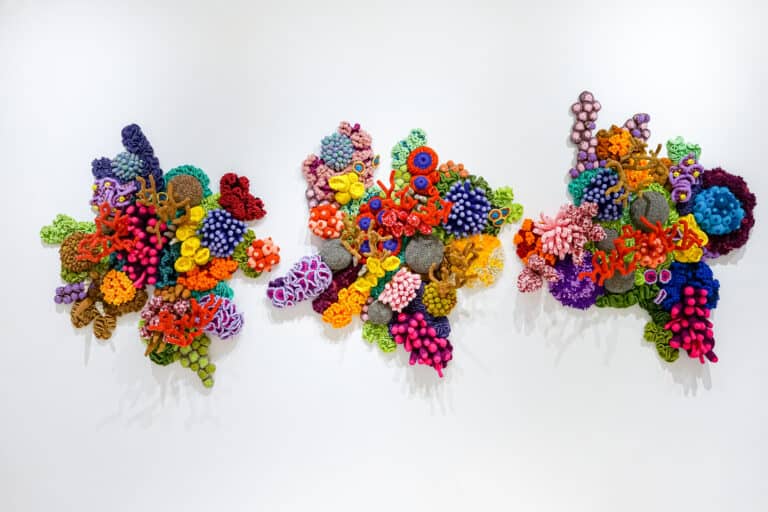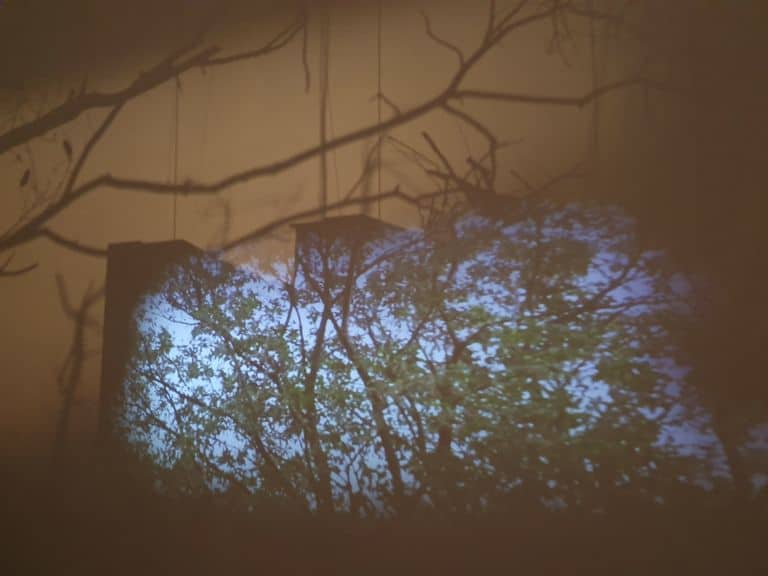There is a haunting effect in this wedding photograph:
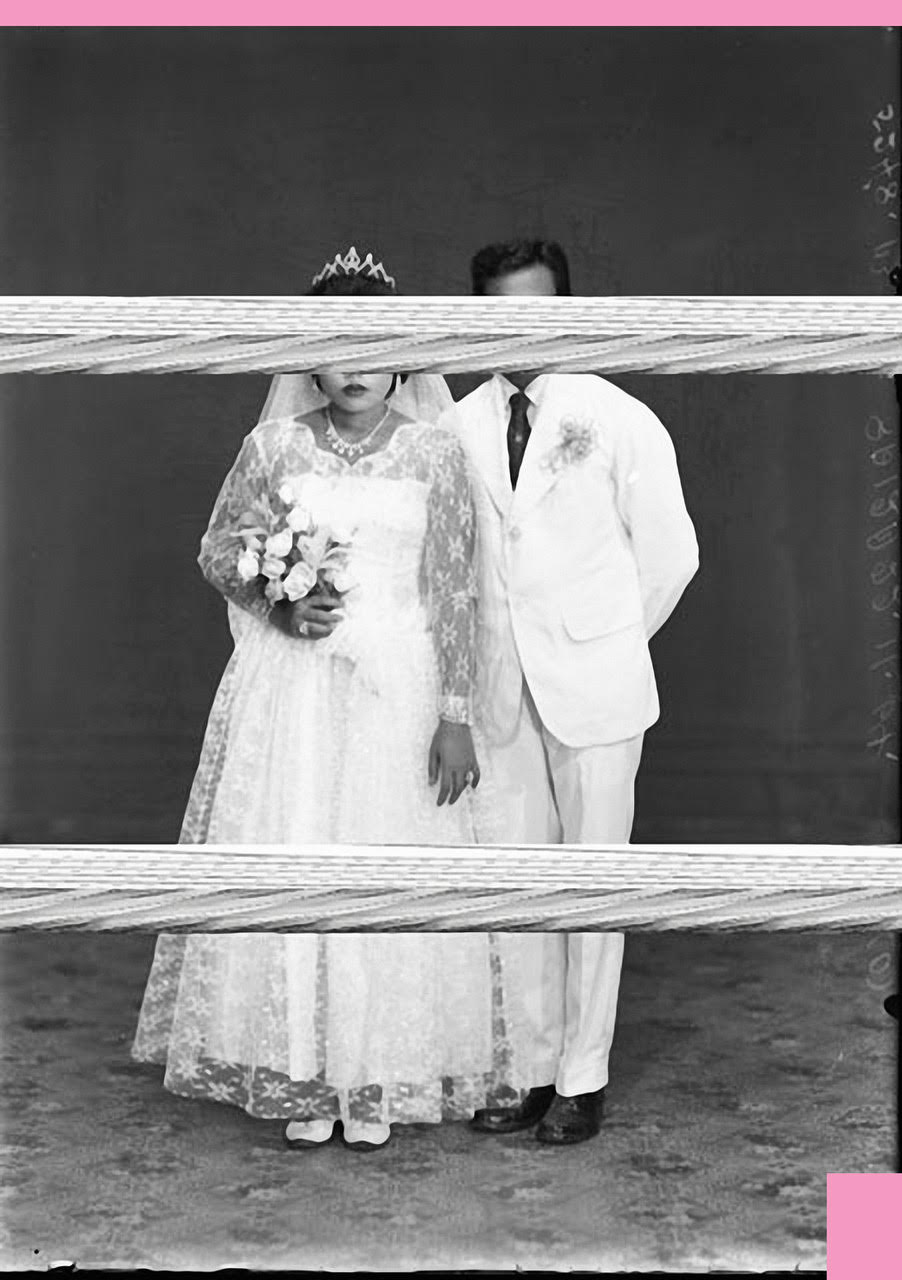
Although assumedly a touching moment of profound joy and love, the scene is violently disturbed by random, horizontal stripes covering the face and legs of the newlyweds. Instead of an intimate, touching memory, the photograph pictured above, LOST-1964-321-WED-004 (2015) becomes more like a scene from a horror flick.
The work, currently on display at A+ Works of Art in Kuala Lumpur till 2 June, is part of the Lost series of works by notable Thai photographer, Manit Sriwanichpoom. The exhibition features creative interventions and accidental glitches in the history of photography in Thailand. The idea for the show took seed when Manit came across old glass negatives (taken between 1964-1968) from a long-shuttered photography studio in Phuket, southern Thailand. The works exhibited in Lost are in fact the result of unsuccessful attempts by Manit to scan and digitise those old negatives.
Along the edges of the frame in the image above, an indexing system by the photographer, and owner of the studio, Liang Ewe (1911-1992), slowly makes itself apparent. Year, order, gender, and a simple categorisation (“WED” means wedding) are all noted (see the top of the above image).
Significantly absent however are the names and other identifying features of the sitters– their identities and stories are lost to us now, over time and despite technological advances.
In serial form, specific patterns emerge throughout the appropriated photographs in Lost, despite the seemingly unique and poetic glitches. They are not (as I had first assumed) artistic choices, but rather the result of specific, quantifiable errors occurring over Manit’s digitisation process. Even while the static found within each work appears random, various horizontal bars where the glitches appear often recur in similar spots:


When Manit first began to digitise the glass plates, he assumed the process would be precise, predictable, and insignificant to the final work. Yet, as the surprising errors and fringe occurrences from the transfer of old glass formats to new digital technology continued to emerge, the images began to take on powerful, metaphoric meaning.
Although each photograph is unique, the Lost series is very much about patterns of loss or outright erasure throughout history, even, or perhaps especially within the context of modernisation.
In Thailand, as with much of the world, the espoused promises of technology constantly meet the barriers of age-old problems. Rapid modernisation throughout the country has perhaps become tainted by much older historical cycles of coups and social unrest. These photographs show us how the desires for modernity and development repeatedly come into friction with the complex realities of life.
Manit’s series is especially significant when considered in the context of Thailand’s relationship to the photographic medium. Despite the promise (or advertising) of photography to immortalise all who are photographed, the medium’s power has perhaps been most thoroughly realised and controlled, by both the royal family, as well as the political elite.
Highly orchestrated images of kings are disseminated throughout the country as propaganda tools to construct an image for citizens and outsiders alike, of an omnipresent power producing national unity. The late King Bhumibol Adulyadej was especially famous for always having a camera:
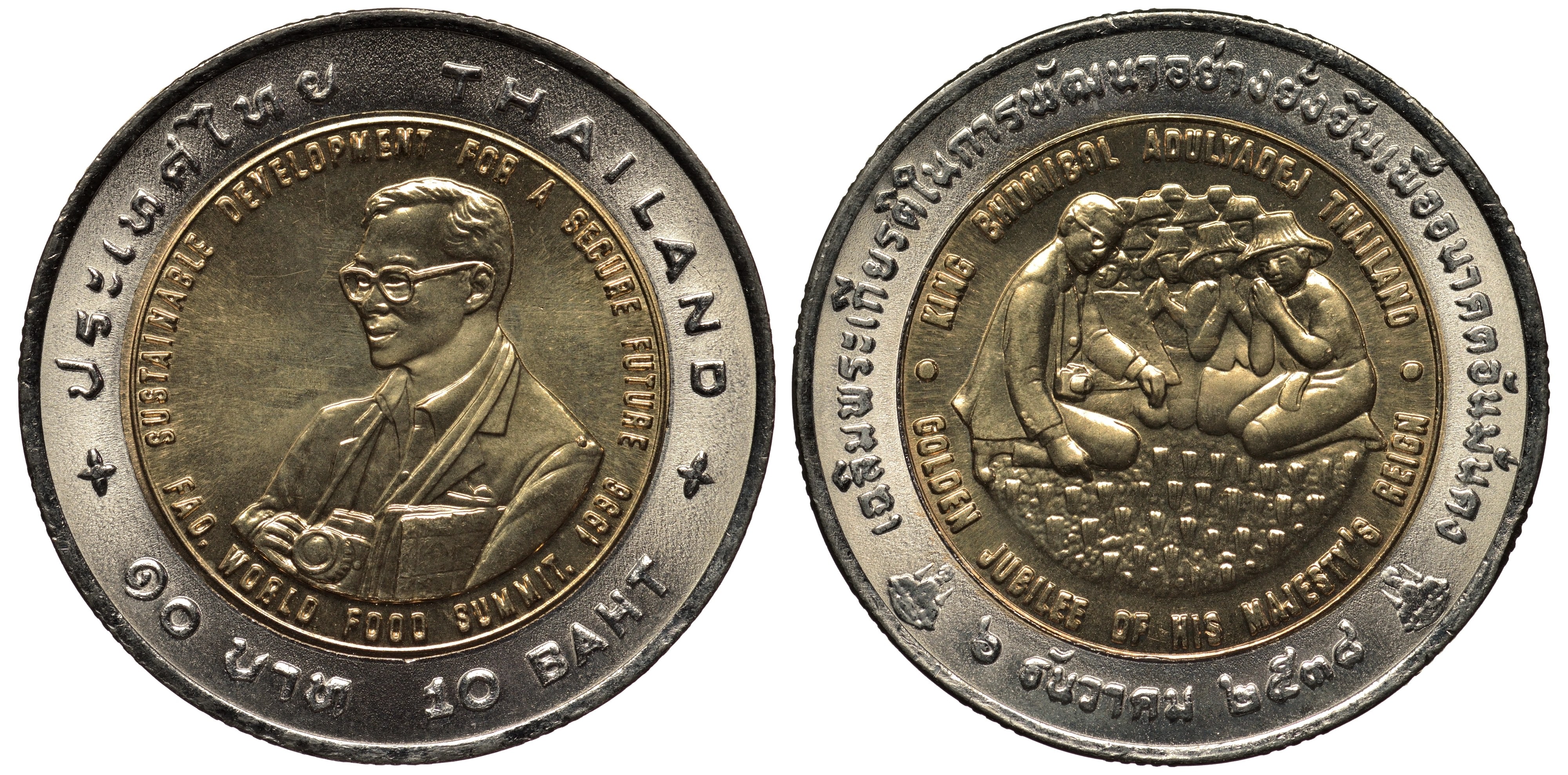
As we see in Lost, the benefits of the photographic medium did not trickle so far down to the masses. While the same image of the King appears pervasively throughout the country, the subjects in Lost are all but lost to time.
What fascinates me most in Lost is how the medium’s changes are layered and change over time. The most obvious changes result from the glitches arising from digitisation. However, the harsh realities of glass plates stored in a tropical environment, emerge as well. There are hints of water damage everywhere, especially in works such as LOST-1967-037-WED-004E (2015) where evidence of moisture deteriorating the plate quality, has begun to creep in:
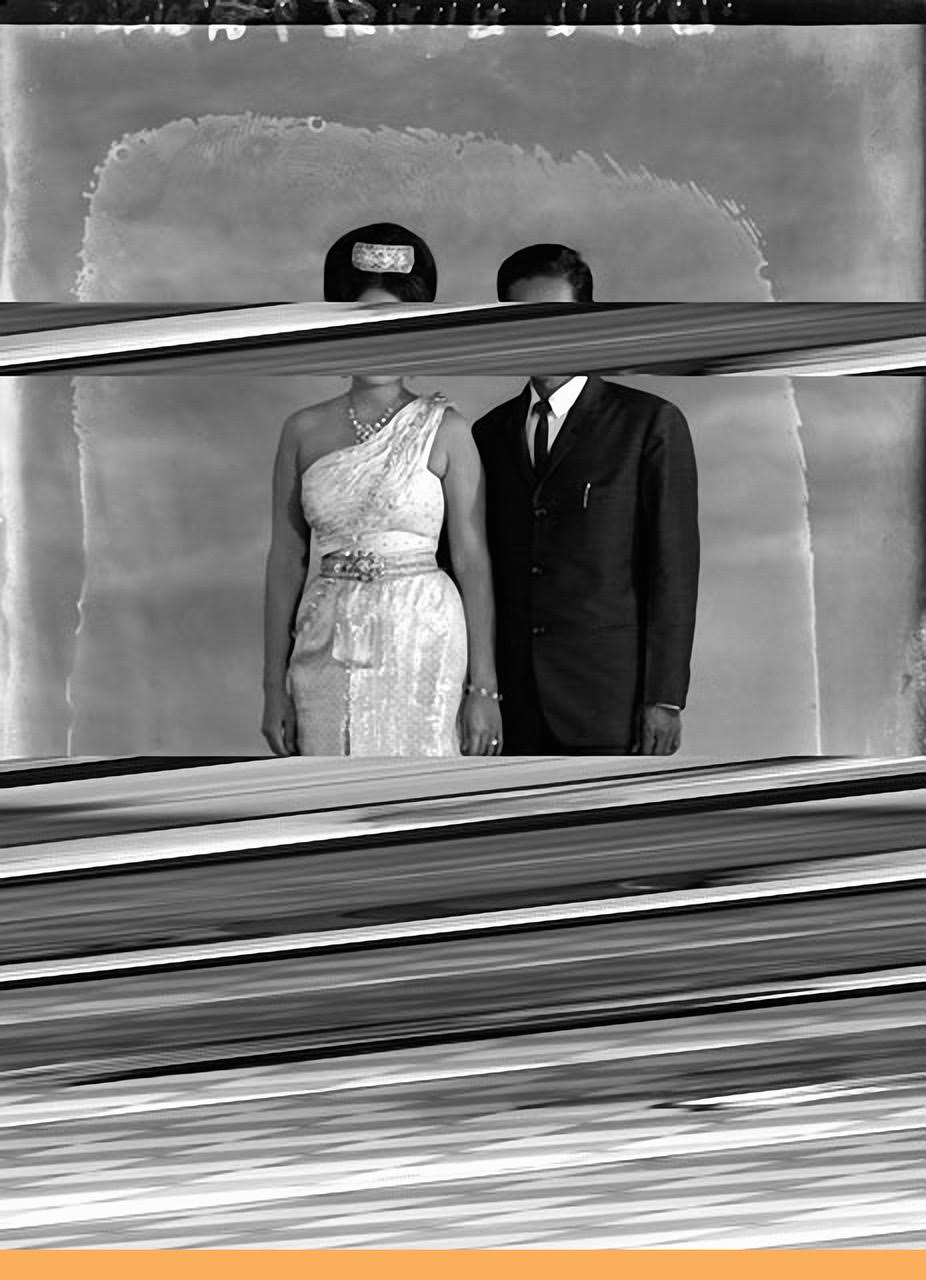
Like the glitches, these stains too reveal something about the physical realities of the medium of photography in Thailand. I find wonderful connections here with Dirty New Media artists in Chicago, who take to task the techno-utopian language being sold to the world (and yet which most benefits Silicon Valley).
For Lost, the last intervention by Manit was to paint subtle, unpredictable bars of colour at the edges of the frame, further complicating the idea of agency and aesthetics in the series. While the images at first appeared neutral as straight, studio photography, they’ve slowly become political, poetic, and worn — if not entirely separated from their original meaning. This is a theme which appears to run throughout Manit’s practice.
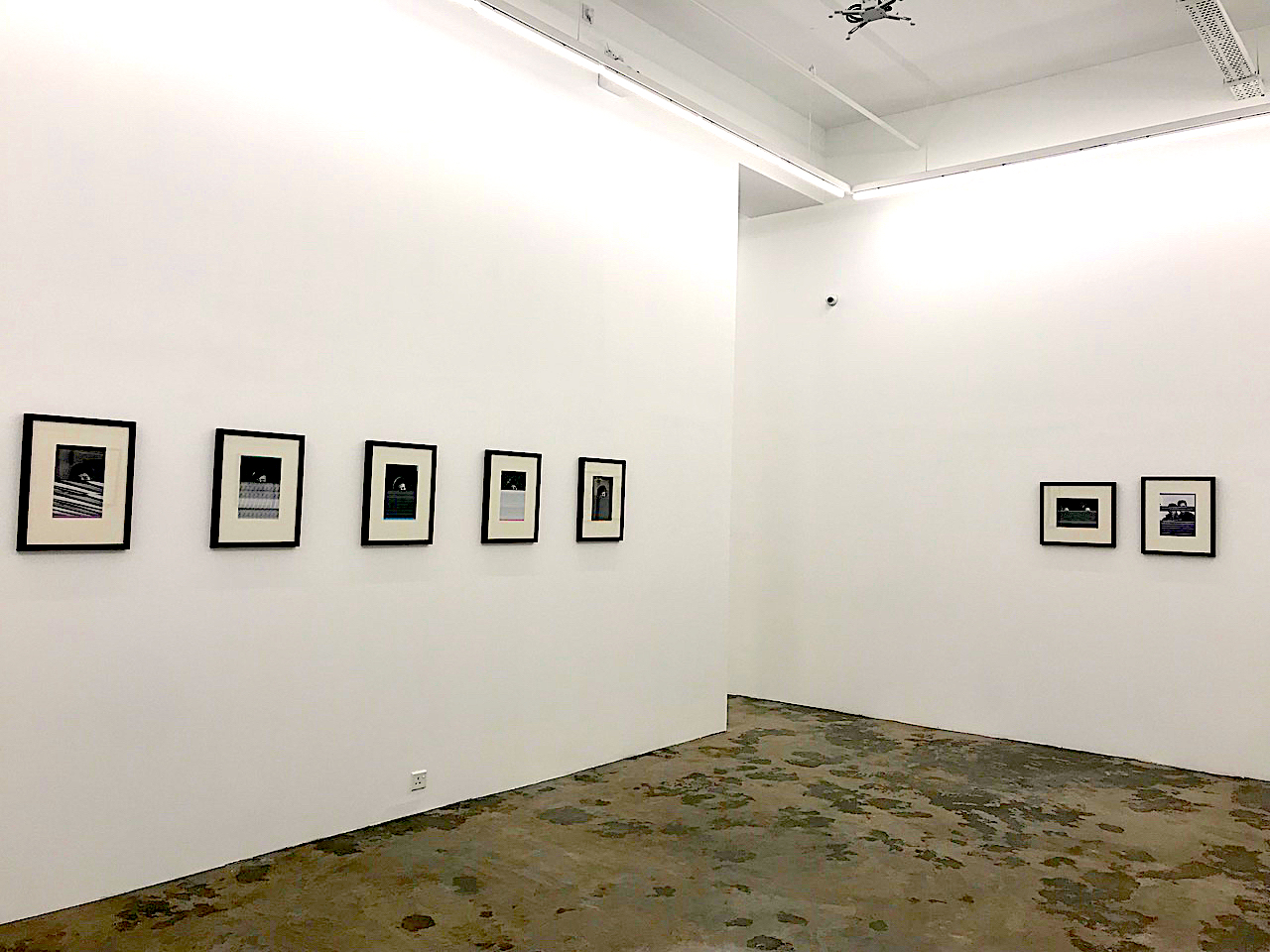
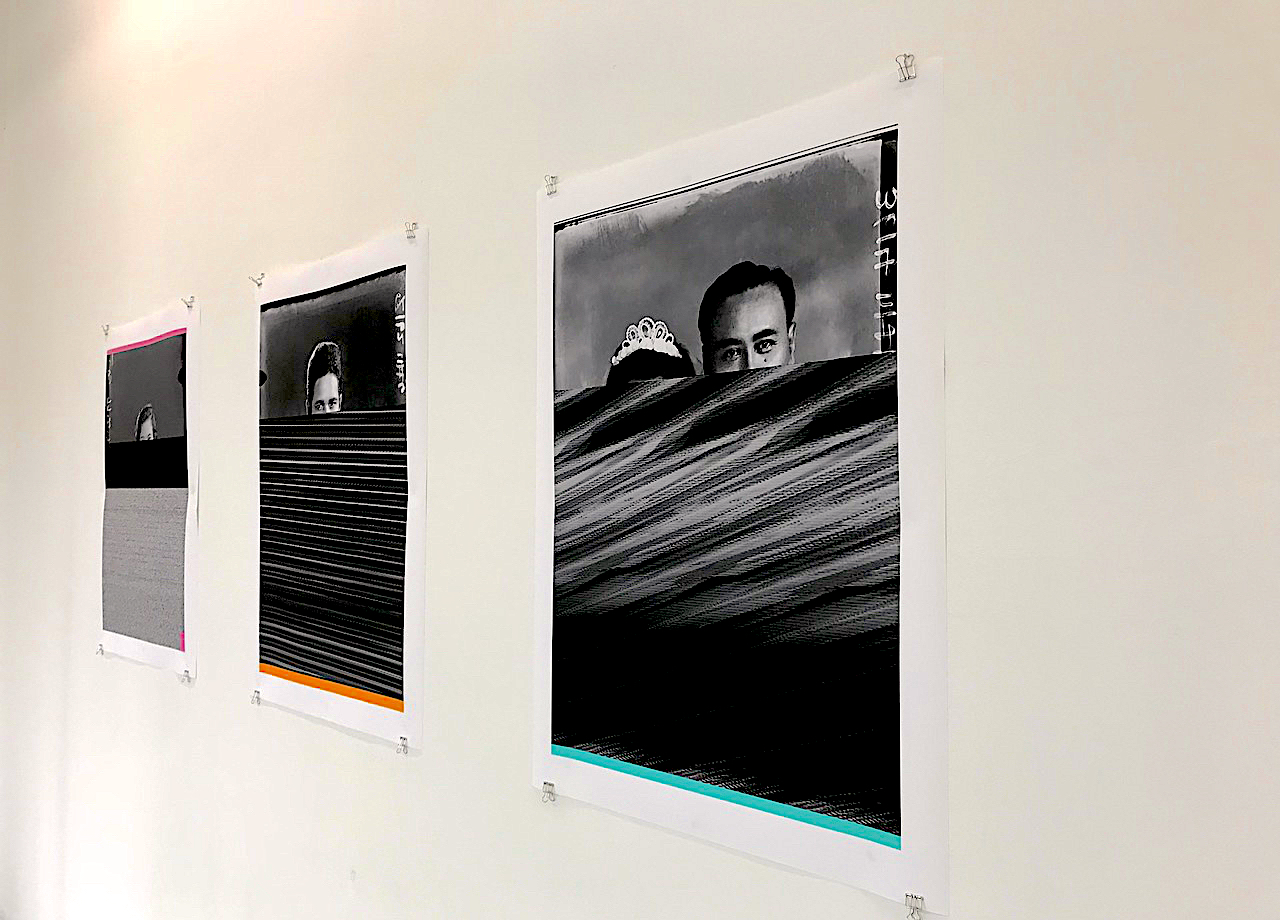
Born in 1961, Manit is an early pioneer of conceptual art in Thailand, becoming prominent internationally in the late 90’s for his important Pink Man series which uses photography and video as a sharp critique of Thailand’s consumerism as well as its representations and archiving of history. Although Pink Man is his most famous series, when considering Manit’s practice in relation to Lost, The Parliament of Happy Generals, (2014) stands out.
Here, we once again see appropriated photographs blurred beyond recognition. Only, unlike Lost which begins with everyday citizens, The Parliament of Happy Generals, are official photographs of Thai Generals. Anonymised and stacked side-by-side as large prints, the works subvert the branding of the army, masking individual identity and emotion.
I also find fascinating connections between Manit’s work and Thai director, Anocha Suwichakornpong’s film, By The Time It Gets Dark, (2016), which looks at the 1976 massacre of Thai student activists at Thammasat University in Bangkok. Like historians, both artist and film-maker are concerned with the shortcomings of the archive and of documentation practices. Indeed, both turn to art and poetics as their response, thereby revealing deeper complexities of history and politics that perhaps journalism cannot face.
Happily, Lost’s cynical meditation on the cyclic nature of oppression was wonderfully countered as the show opened in Kuala Lumpur, Malaysia. As residents returned from voting the night before, the main theme of the night was ultimately one of celebration, as the 61-year rule of the Barisan Nasional coalition, came to an end with the election of Dr Mahathir Mohamad as Prime Minister.
Manit was caught up in the excitement and began taking portraits of gallery-goers displaying their inked fingers – their proud proof of having voted:
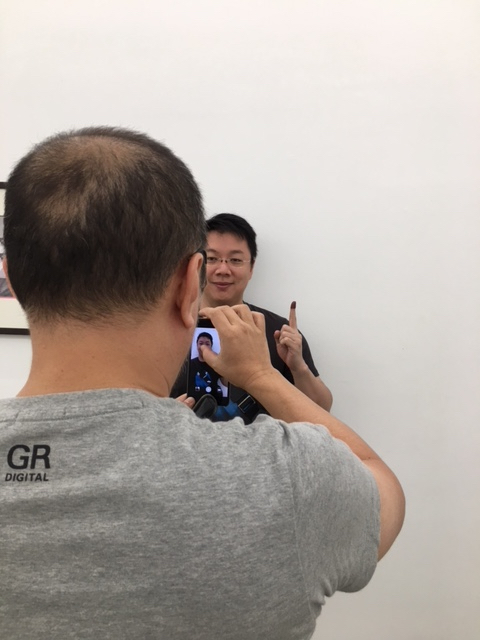
While the Lost photographs offer cautious commentary from a bordering country, the mood at the exhibition’s opening was significantly more buoyant.
Although there was much talk of the value of certain technologies in the Malaysian election that helped hold its politicians accountable – blogs and social media especially – Lost reminds us that these platforms will not liberate us, and have flaws just like the media of yesteryear. Like the glass plates or Manit’s attempts at digitisation, digital technologies possess no innate moral compass and may, in fact, be used to great detriment by those in power.
What Malaysia shows at this moment is that it is indeed the people, the voters on that fateful election night, and the unnamed masses (perhaps not so dissimilar to the anonymous sitters in Manit’s appropriated photographs), who were able to bring about such a seismic historical shift.
Editor’s note: Lost is a part of Manit’s project on Rediscovering Forgotten Thai Masters of Photography. For a closer look at other photographers and art exhibitions in the series, look here and here.
